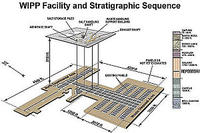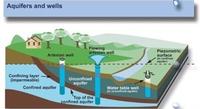-
DHS slow to inspect high-risk chemical plants
Congress passed the $595 million Chemical Facility Anti-Terrorism Standardsprogram in 2006 to help regulate high-risk chemical facilities, but nearly a year after the massive chemical explosion at a West, Texas, fertilizer plant, a new report found little improvement in securing threats from the U.S. 4,011 high-risk chemical facilities.As of 30 June, DHS has not yet conducted security compliance inspections on 3,972 of the 4,011 high-risk chemical facilities.
-
-
Scientists urge making critical infrastructure more resilient to solar storms
Scientists predict the probability of a massive solar storm striking the Earth in the next decade to be 12 percent. The 23 July 2012 solar storm was pointed away from Earth and blasted safely into space, but had it been directed towards Earth, it would have produced the worst geomagnetic storm in more than four centuries, causing extensive electricity problems that could take years to resolve. Scientists are debating the amount of damage the grid would suffer during a massive solar storm. The U.S. National Academy of Sciencesestimated in 2008 that the damage and disruption could reach up to $2 trillion with a full recovery time between four and ten years.
-
-
Hopes for quicker, cheaper ways to build nuclear power plants dim
Promises of building a more cost effective U.S. nuclear industry continue to face setbacks as alternative energy sources like natural gas become cheaper for utilities, while new models for nuclear plants face cost overruns.Nuclear reactor developers sought to build new plants using prefabricated Lego-like blocks to save time and reduce labor costs, butanalysts consider the designs for the new nuclear reactors to be difficult or impossible to build.
-
-
U.S. nuclear plant licensees should seek, act on nuclear plant hazards information
A new report concludes that the overarching lesson learned from the 2011 Fukushima Daiichi nuclear accident is that nuclear plant licensees and their regulators must actively seek out and act on new information about hazards with the potential to affect the safety of nuclear plants. The committee that wrote the report examined the causes of the Japan accident and identified findings and recommendations for improving nuclear plant safety and offsite emergency responses to nuclear plant accidents in the United States.
-
-
DOE chief to visit WIPP to discuss funding for recovery efforts

Energy Secretary Ernest Moniz will visit Carlsbad, New Mexico on 12 August to discuss funding for the Waste Isolation Pilot Plant (WIPP) recovery efforts.Traces of americium and plutonium were released from a nuclear waste drum on 14 February and were detected in the air almost a half-mile outside WIPP. On 15 May, the DOE confirmed that the damage occurred on a waste drum from Los Alamos National Laboratory.
-
-
National vision needed to achieve comprehensive risk reduction along Atlantic, Gulf coasts
A national vision for coastal risk management that includes a long-term view, regional solutions, and recognition of the full array of economic, social, environmental, and safety benefits that come from risk management is needed to reduce the impacts of natural disasters along the Atlantic and Gulf coasts of the United States, says a new report. To support this vision, a national coastal risk assessment is needed to identify coastal areas that face the greatest threats and are high priorities for risk-reduction efforts.
-
-
Using natural, engineering solutions to help U.K. address extreme weather events
The United Kingdom is seeing increased seasonal flood damage not only from coastal and river surges, but from rising groundwater as well. The scale and unpredictability of these events in recent years, while devastating, can also serve as a helpful mirror of future climate change and its predicted effects in the longer term. Experts say that natural solutions, such as reforestation, to improve flood defenses and attempts to keep water in place may provide both short and long term solutions.
-
-
The smart grid offers convenience, but it also makes cyberattacks more likely
Recent efforts to modernize the electric grid have increased communication between utilities and consumers, enhanced reliability, and created more opportunities for green energy producers; but it has also elevated the risk of cyberattacks. Proposed smart grids rely on technology that has created millions of new access points; and though more access points within the grid allows renewable energy generators to supply utilities, they also present opportunities for hackers to breach the system.
-
-
Fire shuts down nuclear repository, but DOE still recognizes operator for “excellent” performance
Five days after an underground truck fire closed the Waste Isolation Pilot Plant (WIPP), the Energy Department (DOE) awarded Nuclear Waste Partnership (NWP), the operating contractor of the nuclear repository, $1.9 million for “excellent” performance during the past year.Shortly after the truck fire, WIPP was shut down because of radiation leak, Still, “No federal or contractor official has lost their job, been transferred, been moved off the WIPP contract or otherwise held accountable. No leadership has changed at the federal level. No company has lost a contract,” noted an industry observer.
-
-
Japan testing underground nuclear waste storage depot, despite local concerns
Data is being collected at the Horonobe Underground Research Center, in Horonobe, Japan to determine whether the site is able to begin storing radioactive waste in conditions which could last for 100,000 years.Japanese utility systems have produced more that 17,000 tons of “spent” nuclear fuel rods from power plants which are no longer useful but are expected to remain radioactive for around several thousand years.
-
-
Sewage treatment contributes to antibiotic resistance
Wastewater treatment plants are unwittingly helping to spread antibiotic resistance, say scientists. Researchers found that processing human, farm, and industrial waste all together in one place makes it easier for bacteria to become resistant to a wide range of even the most clinically-effective antibiotics. This is because so many different types of bacteria come together in sewage plants that it gives them a perfect opportunity to swap genes that confer resistance, helping them live. This means antibiotic-resistant bacteria are evolving much faster than they would in isolation.
-
-
First federal funds for West Coast earthquake warning system
Efforts by California officials to expand an earthquake warning system for the West Coast gained ground last Tuesday as the House Appropriations Committeerecommended $5 million — the first federal funds specifically for the project — toward the warning system. Analysts project the system will cost $38.3 million to build, and $16.1 million a year to operate and maintain. The $5 million would allow the purchase and installation of additional sensors and hiring of staff.
-
-
Researchers create safe, resistant material to store waste
Storing industrial waste has never been a pretty job, and it is getting harder. New techniques for refining such metals as aluminum and vanadium, for example, also yield new byproducts that have to be sealed away from human and environmental contact. Also, the practice of “scrubbing” the exhaust of coal-fired power plants keeps chemicals like sulfur dioxide from entering the air, but produces a more concentrated residue. Now, many of these wastes are proving too acidic, basic or concentrated for commonly used storage materials.
-
-
Groundwater reservoirs are being depleted at an increasing rate

The rate at which the Earth’s groundwater reservoirs are being depleted is constantly increasing. Annual groundwater depletion during the first decade of this century was twice as high as it was between 1960 and 2000. India, the USA, Iran, Saudi Arabia, and China are the countries with the highest rates of groundwater depletion. About 15 percent of global groundwater consumption is not sustainable, meaning that it comes from non-renewable groundwater resources. The increased use of groundwater for irrigation also results in a rise in sea levels, with roughly one tenth of the total sea level rise during the period from 2000 to 2009 due to groundwater depletion.
-
-
Japan exceedingly vulnerable to sea level rise
Scientists say that Japan might be one of the most at-risk nations when it comes to the consequences of sea-level rise.Japan has a coastline 30,000 km long, and much of it in largely low-elevation regions. Additionally, about 80 percent of the country’s industry and population are located in these zones.
-
More headlines
The long view
Helping Strengthen America’s Critical Infrastructure
By Corinne Dionisio
Everyday life depends on a robust infrastructure network that provides access to running water, communications technology and electricity, among other basic necessities. The experts who keep our national infrastructure secure and resilient also need a strong network to share their knowledge and train the next generation of professionals capable of solving complex infrastructure challenges.
AI and the Future of the U.S. Electric Grid
By Doug Irving
Despite its age, the U.S. electric grid remains one of the great workhorses of modern life. Whether it can maintain that performance over the next few years may determine how well the U.S. competes in an AI-driven world.
Using Liquid Air for Grid-Scale Energy Storage
By Nancy W. Stauffer
New research finds liquid air energy storage could be the lowest-cost option for ensuring a continuous power supply on a future grid dominated by carbon-free but intermittent sources of electricity.
Enhanced Geothermal Systems: A Promising Source of Round-the-Clock Energy
By Julie Bobyock and Christina Procopiou
With its capacity to provide 24/7 power, many are warming up to the prospect of geothermal energy. Scientists are currently working to advance human-made reservoirs in Earth’s deep subsurface to stimulate the activity that exists within natural geothermal systems.
Experts Discuss Geothermal Potential
By Graeme Beardsmore and Rachel Webster, University of Melbourne
Geothermal energy harnesses the heat from within Earth—the term comes from the Greek words geo (earth) and therme (heat). It is an energy source that has the potential to power all our energy needs for billions of years.
